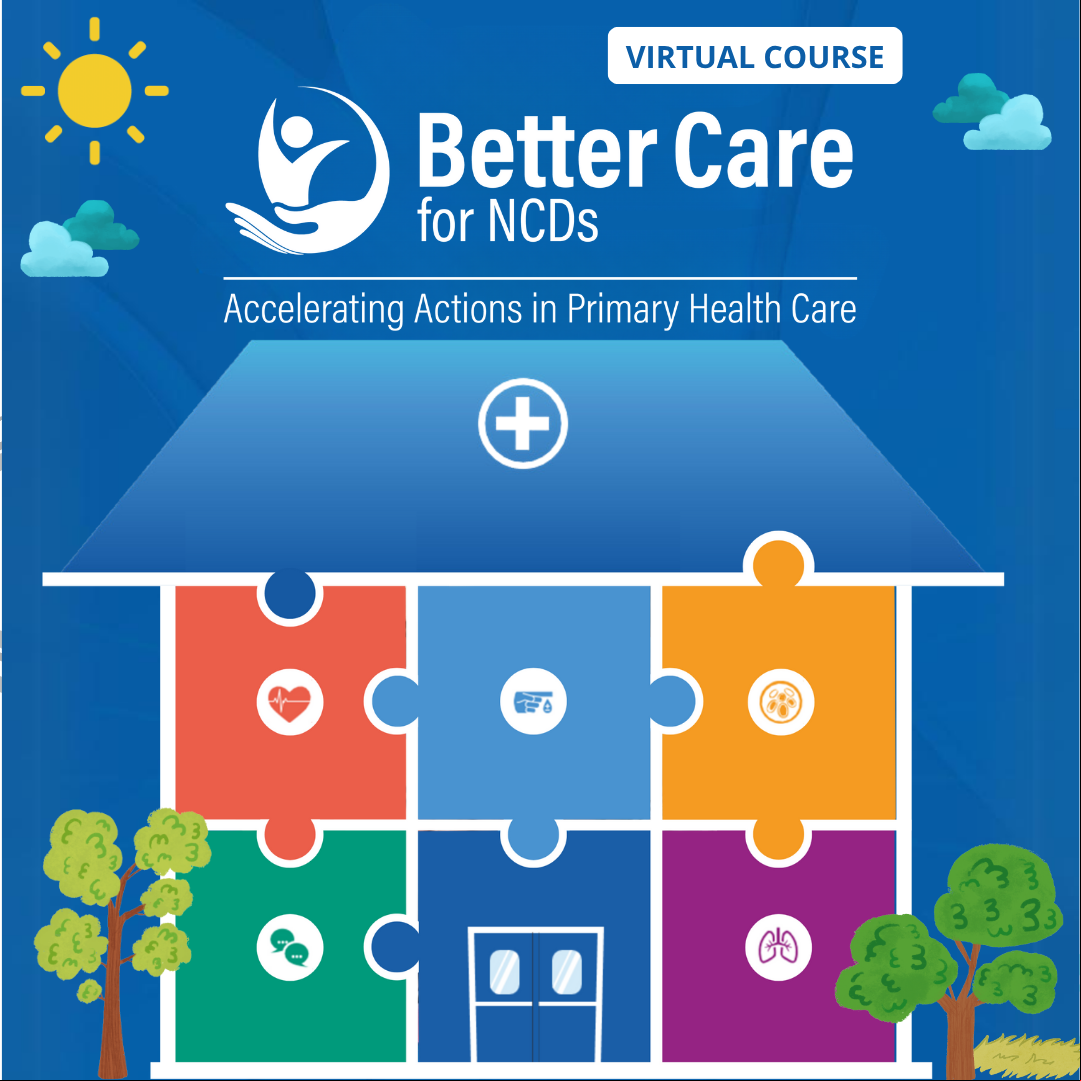
VERSIÓN ESPAÑOL ENGLISH VERSION
Rationale
Noncommunicable diseases (NCDs) are the world’s leading cause of death and disability. They include cancer, cardiovascular disease, diabetes, and chronic lung disease, many of which can be prevented by reducing risk factors such as tobacco and alcohol consumption, physical inactivity, and unhealthy eating.
NCDs are the leading cause of death in the Region of the Americas. In 2021, they were responsible for six million deaths, 38% of them premature, occurring in people between 30 and 70 years of age. Following the outbreak of COVID-19, there was a change in death distribution among the leading causes of mortality, with more deaths attributed to communicable diseases. It is not known how many COVID-19 deaths occurred in people with NCDs, but it is likely that many of these deaths were associated with underlying NCDs. In 2021, NCDs ed for 65% of all deaths, down from 80% in 2019, but remained the leading cause of death in the Americas. Despite this shift in death distribution, NCD mortality rates increased by 1.8% between 2019 and 2021.
An estimated one in four adults in the Americas lives with at least one NCD, highlighting the need to strengthen primary care services. In line with Sustainable Development Goal (SDG) 3—which aims to reduce premature mortality from NCDs by one-third—it is crucial to improve the prevention, treatment, and management of these diseases in primary care.
To address this challenge, in 2023 PAHO launched the Better Care for NCDs Initiative (2023-2030), with the aim of scaling up equitable access to integrated services in primary health care (PHC).
Countries in the Region must bolster the ongoing training of their health teams, adapting to different national and local contexts. The Virtual Campus for Public Health (VH) promotes permanent education in health as a work-based process aimed at improving care for the population.
This course is part of the Initiative’s training itinerary and s its implementation. It provides decision-makers and health teams with a comprehensive view of the epidemiological context, gaps in service quality and availability, and challenges to achieving better care for NCDs in PHC.
Objective
To present and analyze the main dimensions and strategic areas of PAHO’s Better Care for NCDs Initiative so that decision-makers and health teams can identify challenges and define the actions needed to strengthen NCD care in PHC, based on a preliminary analysis of their local situation.
Learning objectives
By the end of the course, participants will be expected to:
- Understand the concept and epidemiological context of NCDs and their comorbidities from a life course approach.
- Understand the impact of social determinants of health on the development of NCDs and their risk factors.
- Recognize the Initiative’s potential based on its objectives, recommended essential services, and expected impact.
- Understand the opportunities for integrating NCD care into PHC based on the Operational Framework for PHC.
- Understand the Initiative’s strategic areas and actions.
- Recognize how to use the rapid assessment instrument as a local planning tool.
- Identify the importance of providing accessible and equitable health services for NCD care through territorial planning and management, strengthening health promotion and the SDH approach, community engagement, intersectoral action, and telemedicine solutions.
- Understand approaches to promote quality and safety in recommended essential NCD services.
- Identify the importance of having competent interprofessional teams for comprehensive and integrated NCD care.
- Recognize the need for planning, forecasting, provision, and quality assurance of NCD medicines and diagnostic tools.
- Identify the importance of monitoring and evaluating lines of care for people with NCDs and the strategy’s key indicators.
Competencies
By the end of the course, participants will be expected to:
- Develop a critical view of their local context, enabling the identification of available and necessary resources and actions, as well as the main challenges for better NCD care in PHC.
- Identify the importance of providing accessible health services for NCD care through territorial planning and management, addressing social determinants, identifying access barriers associated with both supply and demand, intercultural community engagement, and identifying vulnerable populations and territories, and telemedicine solutions.
- Recognize the Initiative as an opportunity to guide the integration of NCD care into PHC.
Target audience
- Primary healthcare teams, including community workers.
- Health services and NCD program managers.
Workload and hours
Total number of hours: 15
Self-istered, asynchronous.
Teaching strategies
Course Modality and Technology Platforms: self-istered, using the PAHO/WHO Virtual Campus for Public Health virtual educational platform.
Flexible Lessons and Teaching Resources: Lessons will be presented using a variety of teaching resources and tools on the virtual platform.
Course structure
Module 1: Presenting the Better Care for NCDs Initiative and its integration into PHC.
Topics:
- Definition and epidemiological context of NCDs.
- Life course, multimorbidity, and risk factors.
- Social determinants of health, their impact on NCDs, and their risk factors.
- Gaps and inequities in access to services.
- Presenting the Initiative: objectives, essential services, and challenges.
- Integrating NCD care into PHC: approach and benefits.
Module 2: Implementation – Strategic Areas 1, 2, and 3
Topics: Implementing the Initiative: strategic areas and actions (Part 1).
- Strategic Line 1: Needs assessment and operational planning. Telehealth and governance.
- Strategic Line 2: Community outreach and engagement in NCD services, with a focus on equity.
- Strategic Line 3: Normative guidance and improving quality of care. Evidence, clinical guidelines, and quality of care for risk factors, cardiovascular disease, hypertension, diabetes, asthma, COPD, and cancer.
Module 3: Implementation – Strategic Areas 4, 5, and 6
Topics: Implementing the Initiative: strategic areas and actions (Part 2).
- Strategic Line 4: Developing interprofessional health teams in PHC. Training itinerary.
- Strategic Line 5: Scaling up access to medicines and technologies. Pharmaceutical services and PAHO Strategic Fund.
- Strategic Line 6: NCD monitoring and follow-up based on key indicators.
